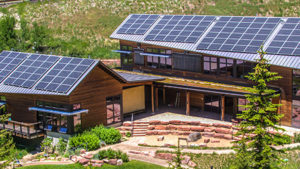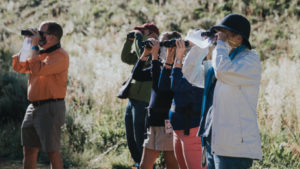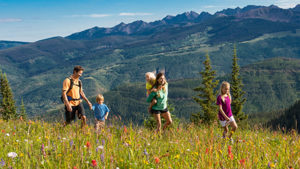Home Composting Method
Read Our Composting Blog for More Information
Choosing the perfect bin for your family and composting needs is crucial. There are a variety of different composting systems that you can use in the high country, depending on a number of factors, including how much time and effort one has to spend and the type of organic materials available to recycle. Other factors to consider are how quickly the compost is desired, how much space is available, and the cost of different containers. For home composting to be successful and simple, it is important that the system fits into the lifestyle of the home composter.
There are many different ways to compost at home, from a simple pile of yard waste in the back corner of your yard to an indoor worm bin (vermicomposting). Since we live in wildlife habitat, we have to be mindful of the safety of our wild neighbors. This means taking steps to prevent the intrusion of bears and other animals who might be interested in the food scraps of last night’s dinner.
Vermicomposting
Vermicomposting is the process of composting using worms, called red wigglers, as a decomposer of organic waste. This is a preferred method for people who don’t have a lot of time to manage an outdoor system and would rather have the worms do all the dirty work. Walking Mountains Science Center operates a large worm composting bin where all of our office waste (paper, lunch scraps, etc.) goes. The worms take care of the waste that would otherwise be sent to the landfill. There are many resources available online and in local bookstores on the art of worm bin building. We suggest being as creative as possible while constructing a worm bin, use recycled materials and most importantly have fun.
What is Composting and Why is it Important?
Composting is the controlled process of breaking down organic material (plant trimming, kitchen scraps, paper, etc) into a dark colored, sweet-smelling soil amendment called compost. Composting can happen quickly or slowly, in large spaces or small, in yards or condos. Using compost reduces water use, improves soil structure in both clay and sandy soils, adds nutrients to the soil, reduces need for fertilizers and pesticides and can save money on garbage bills. And it’s natural…the only thing stopping it from happening, is us.
According to the EPA, nation-wide, the single largest component of the waste stream (by weight) in the U.S. is food waste. Americans throw away more than a quarter of the food we buy and prepare which amounts to about 96 billion pounds of food waste each year. All that waste ends up sitting in the landfill and not breaking down. People tend to think that landfills are huge composting facilities where waste is sent to decompose. This is not the case. The University of Arizona conducted a landfill study and uncovered still-recognizable 25 year old hot dogs, corncobs and grapes in landfills, as well as 50 year old readable newspapers.
Organic substances need oxygen, sunlight and beneficial microorganisms to recycle into compost. Landfill conditions foster an anaerobic (oxygen-depleted) environment where decomposition of food and other waste produces methane, a greenhouse gas 23 times more potent than carbon dioxide. Landfills also generate acidic leachate (toxic runoff produced when organic material comes in contact with other trash) that can travel to nearby waterways.
Compost has the remarkable ability to absorb carbon emissions. Currently, around a quarter of the world’s carbon emissions are absorbed by the earth’s soil. However, climate change is damaging the soil’s ability to absorb carbon emissions. It seems to be a Catch 22. Compost is the answer!
The EPA found that a blanket of compost on a landfill can help reduce methane emissions by as much as 100 percent! Compost can also be used to enhance the nutrients in existing soil and therefore improve soil damage helping the absorption of carbon. Compost is a wonderful thing. Besides composts ability to battle climate change and greenhouse gases, reduce green waste and increase landfill space, compost enhances plant and forest seedling crops in reforestation projects, prevents plant disease, controls erosion, remediates contaminated soil, helps prevent pollution, enriches garden and house plants and flowers. So why not compost?
Upcoming Adult Programs Events







